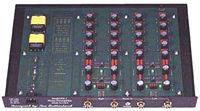| Columns Retired Columns & Blogs |
LATEST ADDITIONS
|
May 31, 1998 |
125 comments
Mellow jazz and small-combo instrumental music is frequently the material of choice in audio stores and at hi-fi shows. But audiophiles enjoy a wide variety of music. Reader Richard Horan wonders: what's your favorite?
Which genre of music gets the most playing time on your system?
Classical
24% (78 votes)
Opera
1% (3 votes)
Choral
0% (1 vote)
Show tunes/soundtracks
1% (3 votes)
Jazz
23% (74 votes)
World music
1% (3 votes)
Country
2% (5 votes)
Rock (all variations)
29% (95 votes)
Pop
3% (11 votes)
Blues
7% (24 votes)
Folk
2% (7 votes)
Other . . .
7% (22 votes)
Total votes: 326
|
May 24, 1998 |
119 comments
The high-end audio business has been around for less than 40 years, with new generations signing on each year. When did you join?
How long have you been interested in quality audio?
Less than a year
2% (7 votes)
1 to 3 years
10% (29 votes)
4 to 6 years
9% (28 votes)
6 to 10 years
10% (31 votes)
10 to 20 years
28% (86 votes)
20 to 30 years
28% (85 votes)
30 to 40 years
11% (35 votes)
50 years or more
1% (3 votes)
Not interested . . .
0% (1 vote)
Total votes: 305





